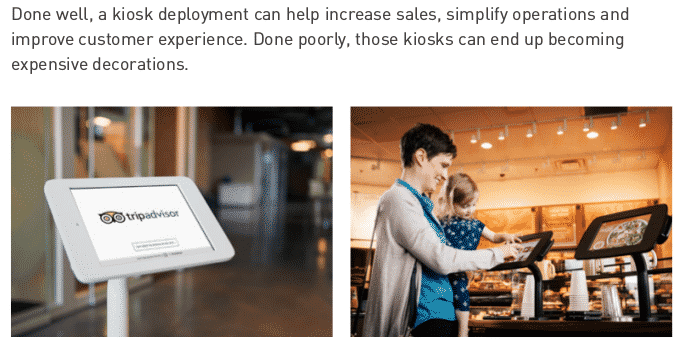Editors note: This is excerpt from white paper series on Executing Tablet Deployments – Step 1
Deploying Tablets Step 1 — Establishing Project Goals
The use of self-service kiosks continues to expand in nearly every part of our society. A March 2017 report issued by research firm Stratistics MRC predicted that the global kiosk market will reach $88.3 billion by 2022, up from $46 billion predicted in 2015.
1. What do you want to achieve?
If you’re a restaurant operator, do you plan to add self-order kiosks to speed throughput and improve the guest experience?
For a retailer, maybe the plan is to expand a store’s offering by incorporating an “endless aisle” kiosk where customers can order items not in the physical inventory and have them shipped to their home—increasing sales in the process.
2. How will you measure ROI?
Although it may seem simple on the surface, measuring the
return on investment from a kiosk deployment can be a
complicated affair. Having a way to calculate ROI can help a
business determine whether a kiosk is worthwhile or if that
investment is best left in the bank.
Factors to consider when calculating a kiosk’s costs should
include the initial equipment and setup costs, staff training,
software development and infrastructure support. For a
self-order or transactional kiosk, those figures would be
compared with the additional profits from increased sales
and lowered labor costs.
3. What is your definition of success?
Once a method for calculating ROI is determined, establishing goals for metrics such as increased sales, reductions in labor costs and improvements in guest satisfaction scores is critical for determining if a kiosk deployment is a success.
For more information contact Lilitab





